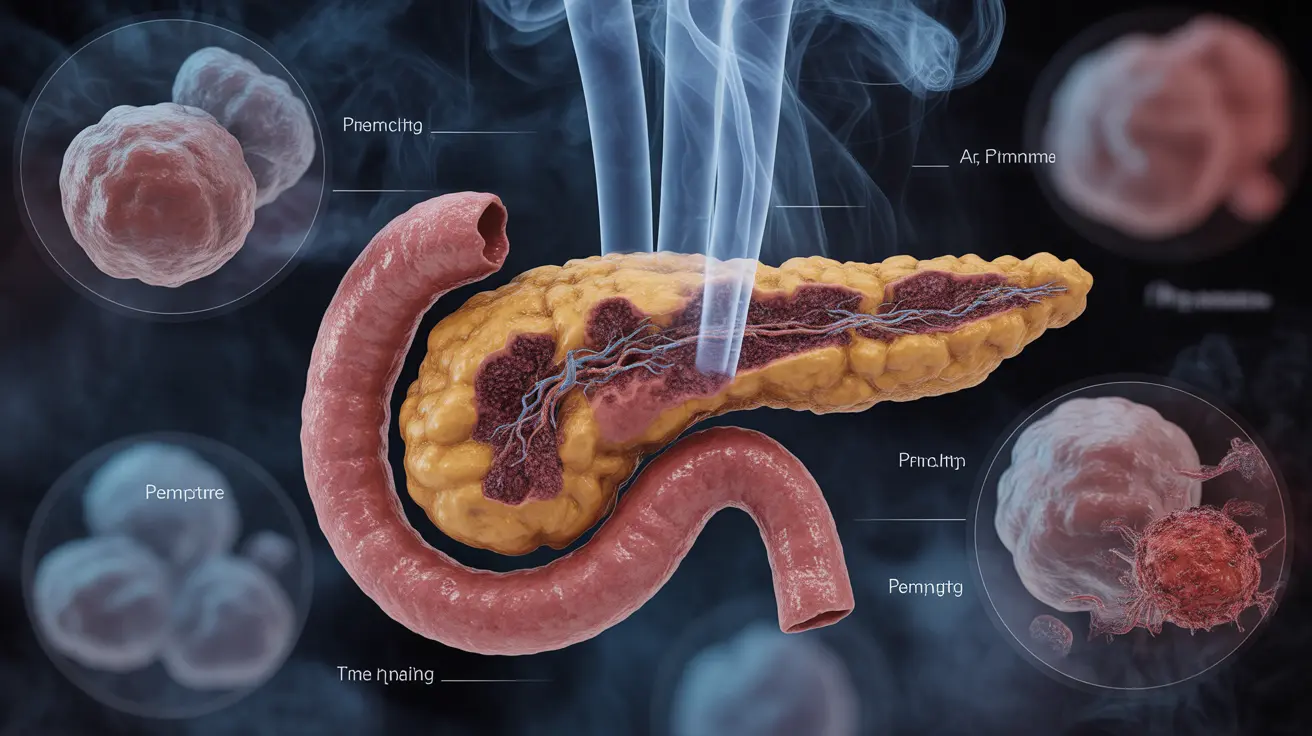Smoking has long been recognized as a significant risk factor for various types of cancer, and its relationship with pancreatic cancer is particularly concerning. As researchers continue to investigate this connection, evidence consistently shows that tobacco use substantially increases the risk of developing this aggressive form of cancer.
Understanding how smoking affects pancreatic cancer risk is crucial for both prevention and public health awareness. This comprehensive guide explores the relationship between smoking and pancreatic cancer, including the biological mechanisms involved and the impact of smoking cessation on risk reduction.
The Smoking-Pancreatic Cancer Connection
Scientific research has established a clear link between smoking and pancreatic cancer development. Regular smokers face approximately twice the risk of developing pancreatic cancer compared to non-smokers. This elevated risk is attributed to the numerous carcinogenic compounds found in tobacco smoke that can damage pancreatic tissue.
How Tobacco Affects the Pancreas
When a person smokes, harmful chemicals enter the bloodstream and eventually reach the pancreas, causing several destructive effects:
- DNA damage in pancreatic cells
- Inflammation of pancreatic tissue
- Formation of precancerous lesions
- Altered cell signaling pathways
- Compromised repair mechanisms
These biological changes can accumulate over time, potentially leading to the development of pancreatic cancer.
Different Forms of Tobacco Use and Cancer Risk
While cigarette smoking is the most studied form of tobacco use, other tobacco products also pose significant risks:
- Cigars and pipes
- Smokeless tobacco products
- E-cigarettes (though long-term studies are still ongoing)
- Secondhand smoke exposure
Each of these forms of tobacco exposure can contribute to pancreatic cancer risk, though the levels of risk may vary.
Impact on Cancer Survival Rates
For individuals already diagnosed with pancreatic cancer, smoking can significantly impact their prognosis. Studies show that continued smoking after diagnosis may:
- Reduce the effectiveness of cancer treatments
- Increase post-surgical complications
- Lower overall survival rates
- Diminish quality of life during treatment
Benefits of Smoking Cessation
Quitting smoking can substantially reduce pancreatic cancer risk over time. The benefits begin immediately after cessation and continue to improve:
- Immediate reduction in inflammation
- Gradual decrease in DNA damage
- Improved overall pancreatic function
- Better treatment outcomes if cancer develops
Frequently Asked Questions
Does smoking increase the risk of developing pancreatic cancer?
Yes, smoking significantly increases the risk of developing pancreatic cancer. Studies show that smokers have approximately double the risk compared to non-smokers, with the risk increasing based on the duration and intensity of smoking.
How does quitting smoking affect the risk of pancreatic cancer over time?
After quitting smoking, the risk of pancreatic cancer gradually decreases. While it may take several years to return to baseline levels, significant risk reduction begins immediately after cessation, with continued improvements over time.
Can cigar smoking or smokeless tobacco also cause pancreatic cancer?
Yes, all forms of tobacco use, including cigars and smokeless tobacco, can increase the risk of pancreatic cancer. These products contain many of the same carcinogenic compounds found in cigarettes.
How does smoking impact survival rates for patients diagnosed with pancreatic cancer?
Continued smoking after a pancreatic cancer diagnosis can significantly reduce survival rates. It can interfere with treatment effectiveness, increase complications from surgery, and worsen overall outcomes.
What biological processes link smoking to the development of pancreatic cancer?
Smoking triggers several biological processes that can lead to pancreatic cancer, including DNA damage, chronic inflammation, and disruption of normal cell function. Carcinogens in tobacco smoke directly damage pancreatic tissue and alter cellular repair mechanisms.




